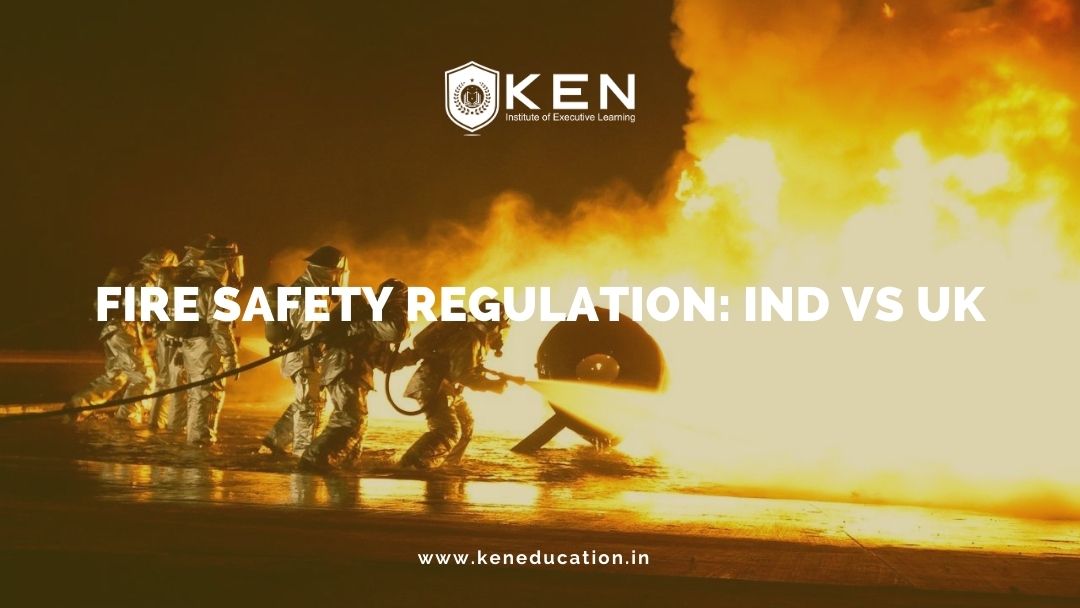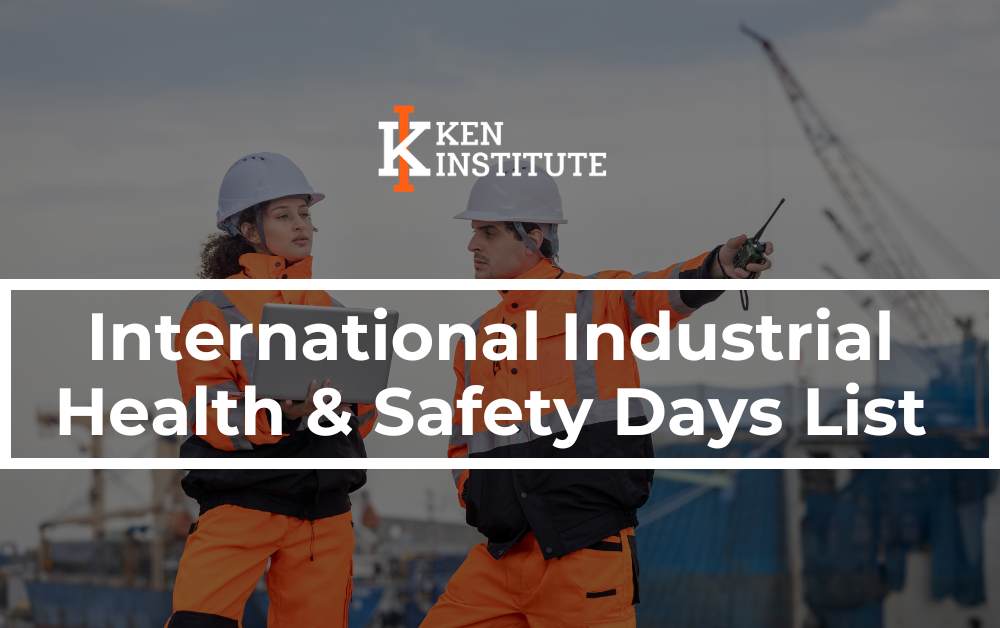Every habitat either residential or commercial has to mandate exquisite “Fire Safety Regulations” 1X BM based on the implementation of safety measures for people and property. Fire is a major catastrophic event for various occupancies all over the world. This blog will help you understand Fire Safety Regulations In India vs the UK.
Fire Safety Regulation In India
Almost every day some fires are reported across the country. These fires not only resulted in the loss of many precious lives and many serious injuries with heavy property loss.
In the last two decades, there has been vigorous growth in construction activities in India, especially high-rise buildings, and the rapid modernization of the Indian Industry has made the synopsis more complicated.
Effectiveness of the fire safety regulations in India for combating the potential fire hazards.
Fire prevention and fire protection are a state subject. The basic responsibility for fire prevention and fire protection lies primarily on State Governments. The rules for fire prevention and fire protection are laid in the form of State Regulations or Municipal By-Laws. Regular fire services in India were established about 215 years back. The service was first established in Bombay in 1803.
Presently fire prevention and firefighting services are organised by the concerned States and Union Territories. The fire brigades in India remain diverse in character and the majority of them continue to remain ill-maintained and organized in different ways.
The National Building Code (NBC) is the basic model code in India relating to building construction and the Fire Safety Act. It means that the responsibility of maintaining the fire safety installations in an occupancy is the responsibility of the owner or occupier.
The Factories Act and State Factories Rules
Amongst the Factories Act and State Factories Rules Section 38 of the Factories Act, 1948 is the most important. It emphasizes, the obligations of the occupier, which incorporate adopting all practicable measures to prevent the outbreak and spread of fire.
- To provide safe means of evacuation.
- To maintain proper firefighting equipment.
- To educate all the workers with the means of escape during fire and make them aware in actions to be taken in a fire incident.
- To explain detailed guidelines to prevent explosion hazards.
IS (Industrial Safety) and OISD (Oil Industry Safety Directorate) Codes and Standards
BIS (Bureau of Industrial Standards) has formulated more than 150 standards on fire safety in buildings and firefighting equipment Systems. Some of the important ones are:
- a) Fire detection and alarm systems
b) First aid and fire extinguishers
c) Internal hydrants and hose reels
d) Temporary structures such as tents and pedals
e) Fire protection-safety signs
f) External hydrant systems
g) Fixed automatic sprinkler fire extinguishing systems - i) Gaseous fire extinguishing systems
j) Water mist system / portable fire extinguisher
k) Long-range foam monitors; fire detection and alarm systems, etc.
l) Oil/Gas Processing Plants
m) Fire Protection Facilities for Petroleum Depots, Terminals, Pipeline installations & Lube oil installations.
SHORTCOMINGS IN THE PRESENT SYSTEM
According to the latest available data, India’s profound record on fire safety has revealed the death of nearly 18,000 people countrywide in fires in both professional complexes and residential buildings during a year, according to the National Crime Records Bureau.
This is due to the following frailties.
- Lack of consolidated fire services
- Different Fire safety Rules & legislation in different states.
- Consolidated unified fire services provide all the necessary guidelines and instruction in firefighting.
- Inadequacy of modern equipment and knowledge of their application, authorization & standardization.
- Lack of proper organizational structure, training, and career progression is there in most of the fire departments in India.
- The unavailability of apt and sufficient funding is a main obstacle in the technological progression of firefighting.
- Training institutions are very few in number in India which provide real-time environmental understanding.
- Scarcity of infrastructural facilities – fire stations and accommodation of personnel, etc.
- Regular analysis is mostly not done.
- Public awareness (DOs & DON’Ts), conduct of regular mock drills, and evacuation drills are not conducted.
- Many commercial and residential buildings especially skyscrapers, have been found laying fire safety norms aside. Many occupiers or societies do not bother to install fire prevention systems in their buildings.
- A Fire Safety Audit is an effective tool for assessing fire safety standards. There are no clear-cut provisions in any of the fire safety legislations in India, regarding the scope, objectives, methodology, and periodicity of a fire safety audit. It seems that the fire safety audit has become a mere ritual. However, the NBC 2016, recommends periodical fire safety inspection by the key personnel of the occupants of the building to ensure fire safety standards.
Fire safety legislation in the UK
As there are nearly twenty thousand commercial fires in the UK each year, these are important duties that should be taken seriously.
All fire safety legislation in England and Wales is conducted under ‘The Regulatory Reform (Fire Safety) Order 2005. This was designed to simplify the existing legal requirements at the time and recommends that all premises used for professional purposes be included under these regulations. Every organization must have a designated ‘Responsible Person’ whose job is to makes sure certain duties and action is taken to prevent fires, injury, or fatality in case a fire incident occurs.
UK fire safety legislation simplified
-
Fire Risk Assessment
All organizations must have a Fire Risk Assessment along with a Fire Safety Log Book. That is one of the first things that a fire authority inspecting officer will ask to see if they inspect your premises.
Risk Assessment doesn’t have to be written down unless you have more than 4 employees, however, it would always be recommended to have it documented for easy reference.
Fire Risk Assessment must:
- Be reviewed regularly
- Be documented if there are 5 or more employees in the business or
- The premises require a license or
- The fire brigade has issued an alterations notice saying you must do The fire risk assessment document must record main conclusions and any action to be taken.
A fire risk assessor can:
– Correctly identify the potential causes of fire in the business
– Identify the people at risk
– Assess the suitability of fire safety measures in place, like fire alarm systems and escape routes
– Assess the persistent management of fire safety in the business, such as fire drills and staff training
– Strategies for a fire safety action plan if changes are needed
– Record all the relevant conclusions.
– Implement the action plan that is needed
– Keep the fire risk assessment updated on an ongoing basis.
-
Fire Extinguishers
UK fire safety legislation states that appropriate fire-fighting equipment must be installed.
-
Fire Safety Signs
Fire safety signs are often disregarded by business owners but in fact all businesses will need at least 2 signs (a Fire Action Notice, and an Extinguisher ID sign) and quite probably more, to be legally compliant.
-
Fire Alarm Systems
Alarms are able to be seen and heard throughout the premises.
-
Emergency Lighting
UK fire safety legislation emphasizes that emergency lighting is required in buildings/workplaces for the purpose of providing light as normal lighting fails during a fire. There are 3 main purposes of emergency lighting:
- a) Escape Route lighting
b) Open Area Lighting / Panic reduce Lighting
c) High-Risk Task Area lighting: provides light to shut down potentially dangerous processes in the event of a fire - Fire Safety Training
All the inhabitants in the building or people working in the workplace premises must be trained in the use of firefighting equipment, the meanings of safety signs, and safe evacuation processes. The UK government has produced a number of guidance documents to help businesses comply with regulations and Fire safety laws and guidance documents for business
These guides:
- Tell businesses what they need to do to comply with fire safety law
· Help businesses carry out a fire risk assessment
· Help businesses identify the general fire precautions they need to have in place.
In every state of the UK, the penalty for not having an appropriate Fire Risk Assessment and suitable fire safety precautions can be prosecution, with severe fines and, if extreme negligence is proven, prison term.
In India, although there are many rules and regulations, codes, and standards related to fire safety, these are seldom applied. Lenience in following fire safety measures resulted in many major fires in various accidents and some of them even resulted in catastrophes.
Indian Legislation should make Fire Safety Audits mandatory all over India and the audit work should be entrusted to expertise in every year in every occupancy. Above all, the success of fire prevention and fire protection mainly depends upon the active cooperation of all personnel in an occupancy and organization. It is the moral responsibility of every country to design exigent legislation for Fire Safety, whether it is an advanced country like the UK or advancing like India.
“Join Ken Institute for comprehensive Fire Safety Courses led by expert faculty, ensuring your readiness to tackle workplace fire emergencies effectively.”
For top-level Industrial safety courses, more advice or any personalized information
Get in touch with us at info@keninstitute.com, or
visit our website at www.keneducation.in or
call us at +917569034271
Let’s connect on Facebook, YouTube, Linkedin, and Instagram.


